Completed projects in PID
WIBS4 Bioaerosol Monitor for Institute for Meteorology and Climate Research, Karlsruhe, Germany
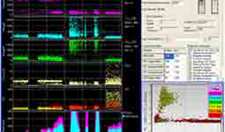
Sponsor: IMK, Karlsruhe Duration: 2009
This project involved the provision to IMK Karlsruhe of the latest version of the WIBS (Waveband Integrated Bioaerosol Sensor) single particle aerosol fluorescence monitor for use in the AIDA ice cloud chamber facility. WIBS4 incorporates numerous software improvements over previous WIBS versions as well as a five-fold improvement on fluorescence sensitivity. As in previous WIBS, the mk4 version records the size, shape (scattering asymmetry), and a 2x2 fluorescence excitation-emission matrix from individual particles in the approximate size range 0.5-20um. UV excitation is provided by two xenon flashlamp sources filtered to deliver onto the particle radiation centred upon 280nm and 370nm, optimal for exciting the biofluorophores tryptophan and NADH respectively. Up to ~125 particle per second may be analysed (corresponds to all particles up to ~1.2 x 10^4 /litre), with excess particles being counted only.
SID3-LISA Small Ice Detector instrument for Institute for Tropospheric Research, Leipzig, Germany
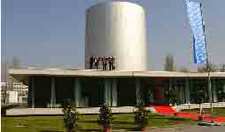
Sponsor: IfT, Leipzig Duration: 2008-9
This project concerns the design and construction of a customised laboratory version of the SID3 (Small Ice Detector) instrument for the Institute for Tropospheric Research, Leipzig, Germany. The new instrument will be specifically designed for use in the IfT's LACIS (Leipzig Aerosol Cloud Interaction Simulator) and although functionally equivalent to the standard canister-mounted SID3 probe it will have a very different physical form to meet the mechanical and flow-geometry constraints of LACIS. Unlike SID3, the SID3-L instrument would also be designed to allow backscatter depolarisation measurements from the particle, a specific requirement of IfT.
WIBS4 Bioaerosol Monitor for University College Cork, Eire
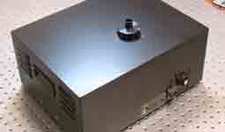
Sponsor: UCC Duration: 2008
This project involved the provision to University College Cork (Dept of Chemistry) of the latest version of the WIBS (Waveband Integrated Bioaerosol Sensor) single particle aerosol fluorescence monitor. WIBS4 incorporates numerous software improvements over previous WIBS versions as well as a five-fold improvement on fluorescence sensitivity. As in previous WIBS, the mk4 version records the size, shape (scattering asymmetry), and a 2x2 fluorescence excitation-emission matrix from individual particles in the approximate size range 0.5-20um. UV excitation is provided by two xenon flashlamp sources filtered to deliver onto the particle radiation centred upon 280nm and 370nm, optimal for exciting the biofluorophores tryptophan and NADH respectively. Up to ~125 particle per second may be analysed (corresponds to all particles up to ~1.2 x 10^4 /litre), with excess particles being counted only.
SID3 Small Ice Detector probe for Institute for Meteorology and Climate Research, Karlsruhe, Germany
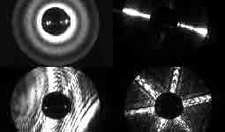
Sponsor: IMCR, Karlsruhe Duration: 2008
This project concerns the construction of a SID3 (Small Ice Detector) probe for the Institute for Meteorology and Climate Research, Karlsruhe, Germany. The probe will be used both in the AIDA cloud chamber facility at Karlsruhe and on the Halo (High Altitude and Long Range) research aircraft supporting the entire German atmospheric science community. The SID3 probe captures the spatial scattering patterns from individual cloud particles down to ~1um in size using an intensified charge coupled device imaging system. This ICCD has single photon sensitivity and records the scattering patterns with unattainable spatial resolution. Through this means, the probe is able to elucidate the crystal morphology of cloud ice crystals too small to be resolved by conventional cloud imaging instruments. Scattering pattern image data are of the form shown opposite (reduced from 582x582 pixels). The examples shown correspond to the scattering from (clockwise from top-left): a super-cooled droplet (~3um diameter); a hexagonal column ice crystal (~10um length); an ice platelet (~15um face); and what is postulated to be a freezing droplet exhibiting ice facet(s). The interpretation of these types of patterns is the subject of current work through both theoretical modelling and through the compilation of an atlas of scattering patterns from crystals of known shapes. (See Light Scattering and Radiative Properties group).
WIBS3 - Fluorescence Aerosol Bio-sensor
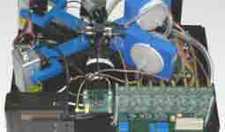
Sponsor: DSTL Duration: 2007-8
WIBS3 is the latest version of the family of single particle fluorescence analysers. Like WIBS2s below, it combines a measurement of particle size and shape (for particles typically in the range 0.5 to ~10um) together with a 2x2 fluorescence excitation-emission matrix designed to ascertain the presence in the particle of bio-fluorophores tryptophan and NADH. Design improvements in WIBS3 result in a significant improvement in fluorescence sensitivity over WIBS2s and a reduction in instrument size by more than half over WIBS2s.
A replica WIBS3 has also been provided to the University of Manchester School of Earth and Environmental Sciences, initially for deployment in the Borneo-based OP3-Danum-08 field campaign where was used to help assess bio-aerosol fluxes and the role of bio-aerosol in cloud microphysical processes.
APPRAISE - Aerosol Interactions in Mixed-phase Cloud
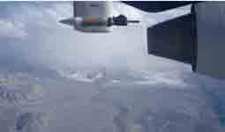
Sponsor: NERC Value: £233,000 Duration: 2007-10
This is a consortium project lead by the University of Manchester and also involving the Universities of Reading, Leeds, and York. The interaction of aerosol with clouds leads to the so called aerosol indirect effect. As the size distribution and chemical composition of aerosol entering clouds change, the structure and lifetime of cloud systems changes. Some of these changes in aerosol properties are man made as the amount and chemical composition of emissions change. These effects are the largest uncertainty in quantifying future climate change. A particular gap in our knowledge is to understand the way in which aerosol particles affect the properties of ice, and mixed ice and liquid water, clouds. Among other substances such as dust and organic material, it is thought that black carbon-containing aerosol (soot) maybe an important ice nucleus in some conditions. Black carbon is also very important in affecting the radiative properties of cloud as it acts as an absorbing material for solar radiation. In determining its effectiveness both as an ice nucleus and as an absorber it is very important as to whether it is incorporated into cloud particles or not. In this project we aim to address the issues of the effectiveness of a wide range of aerosol types as the centres on which liquid droplets form and also their ability to act as centres to initiate the formation of ice crystals in clouds below 0C by using a mixture of techniques.
Particle Phase Discriminator (PPD1) for Colorado State University
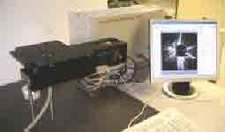
Sponsor: CSU, National Science Foundation Duration: 2006-8
This project will see the development of a dedicated laser-based spatial light scattering instrument for attachment to Colorado State University's continuous flow diffusion chamber. The diffusion chamber allows detailed studies of cloud particle formation and dynamics and the effects of aerosol on cloud particles. The PPD1 will allow the real time determination of the sizes, shapes, and concentrations of particles in the chamber outflow down to ~1um in size. The instrument will assist atmospheric physics researchers in determining the growth and abundance of particles under varying conditions, with implications for cloud microphysics modelling and ultimately climate change predictions.
Small Ice Detector (SID2H) for US HIAPER research aircraft
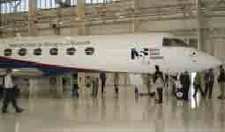
Sponsor: UCAR / NASA Duration: 2005-7
This project is in collaboration with the US National Center for Atmospheric Research (NCAR) and concerns the production and deployment of a Small Ice Detector probe for the new US HIAPER (High Performance Instrumented Airborne Platform for Environmental Research). SID2H will provide researchers with data relating to the sizes, shapes and distributions of cloud particles down to micrometre size and at rates of up to ~8,000 per second. These data may be analysed post-flight to yield information relating to the proportions of super-cooled droplets and ice crystals in mixed-phase cloud, and to the broad classes of ice crystal habit (eg: column, plate, rosette, etc.) present within the cloud. Such information is important in assisting climate modellers to develop accurate computer simulations for accurately predicting climate change.
WIBS2s - Single particle fluorescence monitor with particle shape assessment
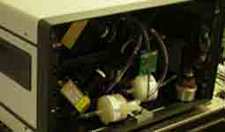
Sponsor: DSTL Duration: 2006
In this project, an advanced version of the WIBS2 single particle fluorescence monitor is being built with the additional facility to record spatial laser scattering data on a particle-by-particle basis. The original WIBS2 uses twin xenon sources filtered to specific UV wavelengths to excite potential bio-fluorophores in individual airborne particles down to ~1um in size. By adding particle spatial scattering analysis to this instrument, assessment of individual particle shape may be made and this additional information will allow an even greater degree of real-time discrimination between particle types.
WIBS2 development - single particle fluorescence monitor
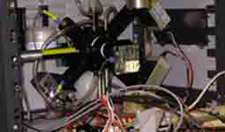
Sponsor: DSTL Duration: 2004-6
This research programme addresses the design and construction of a second generation WIBS real-time sensor. The mk2 variant of WIBS employs a cw infrared diode laser to detect individual aerosol particles drawn from the ambient environment and to trigger the sequential firing of two miniature xenon sources. The xenon outputs are optically filtered to provide UV at 280nm and 370nm respectively, optimal for exciting biological fluorophores tryptophan and NADH. Fluorescence is detected in the bands 300-400nm and 400-600nm. Particles may thus be classified in terms of their size and dual-wavelength fluorescence properties. The WIBS2 is intended to provide a low-cost means of continuously monitoring indoor or outdoor environments especially where networks of devices are needed to monitor a large area.
An aircraft instrument for analysing the structure of atmospheric aerosol and cloud particles (SID3)
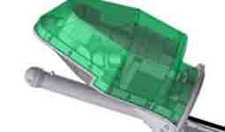
Sponsor: NERC Collaborators: UK Met Office Value: £162,000 Duration: 2005-7
Cloud microphysicists have at their disposal an impressive range of instrumentation for the in-situ study of cloud and aerosol particles, including those which can image individual particles on-the-fly. However, unavoidable optical aberrations and depth of field limitations currently restrict the usefulness of imaging techniques to particles greater than ~20 um in size. In contrast to imaging techniques, high resolution spatial light scattering patterns can provide information on particle features for feature sizes down to the order of the wavelength of the illumination, typically ~0.3 um, and do not suffer depth of field problems. This project, therefore, involves the construction of a new aircraft probe (SID3) based on high-resolution spatial light scattering pattern acquisition via an intensified CCD imager. The SID3 probe will provide the cloud microphysics community with a valuable new tool with which to investigate the morphology and behaviour of smaller atmospheric particles currently beyond the reach of existing instrumentation.
Characterising particle size, shape, and distribution in ice and mixed-phase cloud (SID2 development)
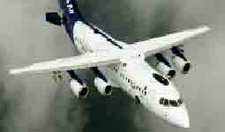
Sponsor: NERC Collaborators: UK Met Office Value: £44,000 Duration: 2004-5
This project is a continuation of the project involving the development and deployment of SID2 (Small Ice Detector mk2) on the new NERC/Met Office FAAM (Facility for Airborne Atmospheric Measurement) aircraft. SID2 will be deployed in one of the wing-mounted instrument clusters on FAAM, and will provide data on the sizes and shapes of cloud and aerosol particles down to 1 um in size and at rates of up to ~8,000 per second. These data may be analysed post-flight to yield information relating to the proportions of super-cooled droplets and ice crystals in mixed-phase cloud, and to the broad classes of ice crystal habit (eg: column, plate, rosette, etc.) present within the cloud.
An instrument for the simultaneous acquisition of size, shape, and spectral fluorescence data from single aerosol particles
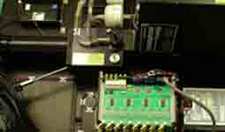
Sponsor: DSTL Value: £161,000 Duration: 2004-6
This project concerns the construction of a bio-aerosol monitor designed to capture and record intrinsic fluorescence spectra from individual aerosol particles carried in a sample airflow and to simultaneously capture data relating to the spatial distribution of elastically scattered light from each particle. The spectral fluorescence data recorded by this PFAS (Particle Fluorescence and Shape) monitor contains information relating to the particle material content and specifically to possible biological fluorophores. The spatial scattering data from PFAS yields information relating to particle size and shape. The combination of these data can provide a means of aiding the discrimination of bio-aerosols from background aerosol particles which may have similar fluorescence properties but exhibit shapes and/or sizes not normally associated with biological particles. The radiation used both to excite particle fluorescence and generate the necessary spatially scattered light flux is provided by a novel compact UV fibre laser operating at 266nm wavelength. Data from up to ~5,000 particles per second may be acquired for analysis, usually performed by artificial neural network classification.
Continued development of single-particle Raman spectrometer system
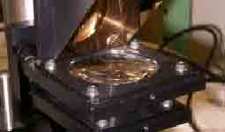
Sponsor: EPSRC / DSTL Value: £52,000 Duration: 2003-6
This ICASE studentship has been awarded by EPSRC and DSTL to support a research student on the continued development of the single-particle Raman spectrometer system, SPaRS. The system is designed to allow individual airborne particles to be captured from the ambient environment and delivered into an electrodynamic trap where they are levitated in the beam from an infrared diode laser. The Raman signature from the particle is captured using a high-sensitivity spectrometer, whilst the particle size and morphology is assessed from its spatial light scattering pattern, captured using a dedicated hybrid photodiode detector array. The research student's current work concerns optimisation of the electrical charging and capture and manipulation of the individual aerosol particles.
Development of modular instrumentation for stack emission monitoring and characterisation

Sponsor: KTP / PCME Ltd Value: £102,000 Duration: 2004-6
PCME is an instrumentation manufacturer focused on monitoring particulate emissions from industrial processes. The company develops, manufactures and markets instruments to assist industrial operators satisfy environmental and regulatory requirements as well as provide information to optimise their industrial processes. The company currently specialises in products for monitoring particulate emissions from industrial stacks and chimneys using electrical charge induction monitoring techniques or, in one case, optical opacity measurement. In all cases, the instruments provide data on total particle mass per unit volume of air. It is the market leader in monitoring emissions in the Metals, Minerals and Chemical industries in Western Europe and it exports 65% of its instruments; typical customers are Ford, Rugby Cement, British Gypsum, Corus, Bayer BAT, and Proctor & Gamble. This KTP Programme will provide the company with a new modular instrument range for monitoring requirements where specific particle analysis or characterisation is required.
Formation and development of ice and precipitation particles in convective clouds over the UK (ICEPIC)
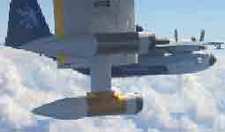
Sponsor: KTP / PCME Ltd Value: £102,000 Duration: 2004-6
PCME is an instrumentation manufacturer focused on monitoring particulate emissions from industrial processes. The company develops, manufactures and markets instruments to assist industrial operators satisfy environmental and regulatory requirements as well as provide information to optimise their industrial processes. The company currently specialises in products for monitoring particulate emissions from industrial stacks and chimneys using electrical charge induction monitoring techniques or, in one case, optical opacity measurement. In all cases, the instruments provide data on total particle mass per unit volume of air. It is the market leader in monitoring emissions in the Metals, Minerals and Chemical industries in Western Europe and it exports 65% of its instruments; typical customers are Ford, Rugby Cement, British Gypsum, Corus, Bayer BAT, and Proctor & Gamble. This KTP Programme will provide the company with a new modular instrument range for monitoring requirements where specific particle analysis or characterisation is required.
Measurement of scattering and absorption properties of ice crystals appropriate to tropical cirrus cloud
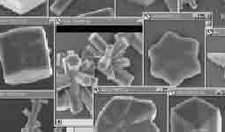
Sponsor: NERC Value: £166,916 Duration: 2002-5
The proposed project, led by the STRI's Light Scattering Research Group, aims to enhance recently developed methods of measuring the scattering properties of ice crystals, with particular application to clouds associated with deep convection, such as tropical cirrus anvils or detached anvils. Non-contact manipulation and trapping methods will be used in conjunction with ice analogue materials to measure selected scattering matrix elements and related properties of crystals, such as the asymmetry parameter and depolarization coefficient, with particular emphasis on aggregates. The project will help to answer a fundamental question of what is a representative asymmetry parameter for the tropics, contribute to increasing the accuracy of cloud retrievals in terms of cloud optical thickness and crystal effective size and allow a more representative parametrization of the phase function/asymmetry parameter for application to radiative transfer studies using Cloud Resolving Models.
WIBS development
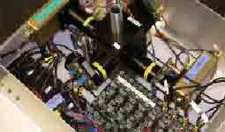
Sponsor: DSTL Value: £149,603 Duration: 2002-6
This research programme addresses the design and construction of a prototype real-time sensor intended for continuous aerosol characterisation. The sensor utilises simultaneous light scattering and intrinsic fluorescence measurement from a volume of aerosol drawn from the ambient environment in order to establish properties relating to the nature and origin of the aerosol. The sensor incorporates a radio telemetry unit to allow remote control of sensors and transmission of data from distributed sensors to a central control point.
SPaRS - a single particle Raman spectrometer for non-destructive physico-chemical analysis of airborne particles
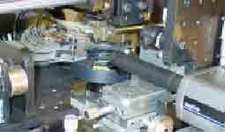
Sponsor: NERC Value: £116,463 Duration: 2002-4
An aerosol particle analyser suitable for measurements on single particles sampled directly from the atmosphere will be developed. The instrument combines elastic light scattering with chemical analysis of particles down to submicron sizes by taking advantage of electrodynamic particle capture and levitation. The preferred spectroscopic technique proposed for the instrument is Raman scattering. To overcome difficulties with the levitation of submicron particles, a novel, two-stage charging method is proposed. Apart from spectroscopic analysis, the instrument will allow the determination of the shape and aerodynamic size of particles. The study of microchemical reactions will also be possible. Following spectroscopy, particles can be recovered for further analysis, e.g. SEM or EDX. Other analytical techniques can also be included.
Detection of biological and non-biological particles in drinking water
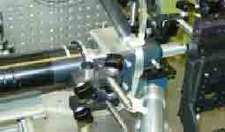
Sponsor: EPSRC Value: £148,564 Collaborators: Anglian Water, DSTL, Bristol Industrial and Research Associates Ltd. Duration: 2001-4
This project is aimed at the development of a system to continuously classify low-concentration particulates in drinking water and at providing significantly improved on-line detection of the presence of biological particles such as Cryptosporidium and Giardia. The proposed system would seek to help fill the gap between off-line high specificity, high sensitivity, (and high cost) detection methods, and lower cost methods based on particle counting/sizing which can operate on-line but with little or no specificity. It would build upon technologies developed at UH under support from DSTL for the monitoring and detection of hazardous airborne particles, especially airborne biological organisms. In both scenarios, the number of hazardous particles present may represent a minute fraction of the total particulate population. The proposed approach involves the individual characterisation of water-borne particles at high throughput rates (typically ~5,000 particles per second) by simultaneous measurement of each particle's spatial light scattering properties and intrinsic fluorescence. Spatial light scattering analysis provides indices relating to particle size, shape, and structure, whilst intrinsic fluorescence, measured at specific wavelength bands, can provide additional evidence of a particle's biological nature. This combination has been successfully employed in instrumentation for the continuous monitoring and classification of airborne particles involving the discrimination of biological organisms from non-biological background particles.
SID2 development - Characterising particle size, shape, and distribution in ice and mixed-phase cloud

Sponsor: NERC Collaborators: UK Met Office Value: £190,107 Duration: 2001-5
Under a previous NERC award (GST/02/1333 IFMA) the applicants developed a prototype light scattering instrument, referred to as SID (Small Ice Detector), with the principal objective of discriminating between ice crystals and super-cooled water droplets in cirrus cloud. The relative abundance of such particles (down to micrometre sizes) was known to have significant impact upon cloud radiative properties and cloud formation dynamics but had been impossible to measure effectively with existing instrumentation. SID was commissioned in September 1999 and has since been used extensively in field campaigns involving the Met. Research Flight's C-130 research aircraft. Advances in detector and laser technology now allow the construction of a proposed new instrument capable of significantly outperforming SID by achieving not simply discrimination between ice crystals and super-cooled droplets, but in addition, achieving the classification and spatial distribution mapping of various ice crystal habits within ice and mixed-phase clouds. Ice crystal habit classification is achieved by comparison of recorded cloud particle scattering data with laboratory data from single levitated exemplar crystals. Data from the new SID2 instrument will help advance understanding of glaciation processes and would assist the development of accurate models of cloud radiative properties.
Development of ambient air monitor
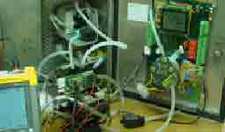
Sponsors: TCD (KTP), NERC, Casella CEL Ltd. Collaborators: Atmospheric Sciences Research Group; Casella CEL Ltd. TCD/Casella Ltd. Value: £174,224 Duration: 2000-2003
Current ambient air quality standards and instruments (such as the TEOM used in the UK National Air Pollution Monitoring Network) are based upon mass concentration based techniques (mass of dust per unit volume). All real time instruments have recognised limitations and errors when measuring ambient concentrations of particles (notably relating to volatile organic compounds, VOCs, and the high number of submicron particles from vehicle emissions). Current research studies are indicating that the £number£ of fine particles (especially for submicron particles) have a far greater impact on human health than simply the mass of inhaled particulates. There is therefore an urgent need to develop alternative counting based methods. This need will be emphasized by a requirement for European Standardisation in measurement methodologies by 2005. This TCS programme seeks to address the criticisms of all current systems by developing an economical counting based instrument targeted to ambient particulate measurement. It is anticipated that the technological advances from this development project would also find applications in personal and workplace monitoring products.
The microphysical and radiative properties of mixed-phase layer cloud
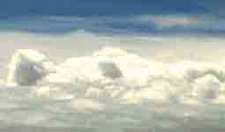
Sponsor: NERC Collaborators: Manchester University, University of Reading Value: £12,423 Duration: 2001-5
A combination of Radar, LIDAR and in-situ aircraft measurements will be used to investigate the glaciation processes in mixed phase layer clouds at a range of temperatures. Particular emphasis will be given to understanding the role of embedded convection and supercooled cloud. The influence of cloud structure on the radiative properties will be investigated. The interpretation of the data will be supported by modelling studies. UH's role will be principally to deploy the SID (Small Ice Detector) probe in field studies and to analyse data from the probe.
Routines for analysis of light scattering data
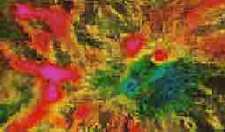
Sponsor: DSTL Value: £63,665 Duration: 2000-1
This project is part of an ongoing development of systems for airborne particle analysis. The systems employ multi-parameter measurement (for example, spatial light scattering and intrinsic fluorescence) of individual particles with the intention of facilitating particle classification at high throughput rates. Novel data analysis routines are under investigation to ascertain their potential for enhancing particle classification and overall accuracy.
Scattering properties of regular and irregular ice crystals
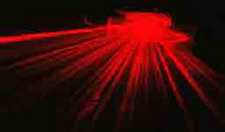
Sponsor: NERC Collaborators: Met Office, Bracknell, Hadley Centre, Met. Research Flight, DLR, Remote Sensing Ground Station Neustrelitz, Germany, University of Lille Value: £98,397 Duration: 1999-01
It is proposed to develop experimental procedures applicable to the study of scattering properties of atmospheric particles, most notably ice crystals, and to measure the scattering functions of regular and irregular micro-objects resembling appropriate atmospheric morphologies. Optical and electrodynamic trapping techniques will be used, allowing detection of scattering from single particles to determine the phase function between 3 and 177degrees . The wide angular range allows estimation of the asymmetry parameter and investigation of surface waves on irregular objects. Particles of appropriate morphology and bulk optical properties will be used to ensure that the results are applicable to atmospheric ice. The data will be used to test geometric optics and discrete dipole approximations, and discretized Mie formalism and T-matrix methods. The phase functions will be applied to interpretation of cirrus radiance data from satellites and aircraft.
Feasibility Study: detection of biological particles in drinking water
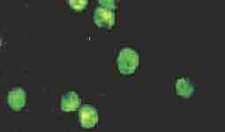
Sponsor: Royal Society Value: £7,812 Duration: 1999-00
There is growing concern in Europe and North America over contamination of drinking water by the parasite Cryptosporidium parvum. Even in extremely low doses, this organism can cause severe diarrhoea and vomiting, and in immunocompromised individuals, can cause death. The Cryptosporidium oocyst, ~5 to 8m m in size, is incredibly tough, being resistant to both bleach and chlorine. The search for an effective method of continuously monitoring drinking water supplies for Cryptosporidium is thus becoming urgent. A major obstacle to monitoring has been the need, for bio-assay methods in particular, to concentrate possibly just a few cells from many litres of water. The presence of far more populous silt particles make such filtration (or flocculation) problematic. Alternatively, optical scattering methods have been developed which measure whole populations of particles suspended in flowing water samples. However, such techniques provide only inferential evidence, correlating an increase in background particle populations with filter breakdown and an increased likelihood of Cryptosporidium presence. We are investigating a radically new approach to the detection of Cryptosporidium offering potentially single organism detection sensitivity. The approach is based upon research carried out at UH into the real-time environmental detection of individual airborne bacteria. The technique involves the simultaneous analysis of intrinsic particle fluorescence together with particle shape/size (derived from spatial light scattering) from individual particles in a sample airflow. Up to ~5,000 particles/second may be analysed and classified. We wish to exploit these developments for on-line Cryptosporidium detection by rendering water-borne particles in aerosol form where they can be spatially concentrated and individually analysed.
Development of microreactor instrumentation
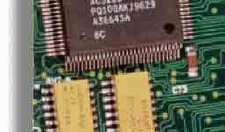
Sponsors: TCD (KTP), HEL Ltd. Collaborators: HEL Ltd. Value: £174,224 Duration: 1997-00
Hazard Evaluation Laboratory is an independent organisation specialising in chemical process safety and development activities. The company provides consultancy, contract testing, research and specialist equipment for principally the pharmaceutical sector of the chemical industry community. The specialist equipment includes computer controlled laboratory-scale reactor systems which allow studies of chemical plant processes involving possibly highly reactive or unstable (ie: explosive) chemicals. These reactors are complemented by specialist computer controlled calorimeters to allow hazard screening, detailed adiabatic runaway reaction analysis, and scale-up studies. The company was aware of the substantial market potential for reactor and calorimeter equipment throughout the chemical industry sector (including for example, petrochemicals, polymers, etc.). However, exploitation of this potential was inhibited by both a lack of company expertise in the fields of market analysis and market exploitation strategy, and by the outdated and inflexible nature of the existing product software interfaces, The 2:2 KTP would overcome these limitations by the development and application of in-house operational management and market analysis tools hand-in-hand with the development of versatile state-of-the-art product control and user interface software modules based on the Windows™ operating system.
INTACC - investigation of the effects of aerosols on cold clouds
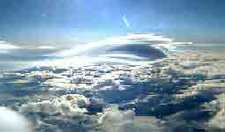
Sponsor: European Commission Collaborators: UK Met Office, Stockholm University, University of Manchester, University of East Anglia, Max Planck Institute, Germany, University of Sunderland Value: £55,734 Duration: 1999-01
We have developed an instrument referred to as SID, (Small Ice Detector), which provides information on the size and shapes of individual particles in cloud within the size range ~1 um to ~ 70 um. The instrument functions by acquiring data relating to the light scattering properties from individual particles flowing through a measurement space. SID has been be used during the INTACC campaign in Sweden (Sept./Oct. 1999) to acquire data describing the spatial distribution and relative size/shape spectra of ice crystals and water droplets within cold clouds. Such information is vital in modelling the radiative properties of the clouds and estimating the effects the clouds have on climate. We are currently developing a suite of software tools for processing the large quantities of data which SID has generated so as to render it in a suitable form for more detailed analysis, to be carried out in early 2000.
Development of a multi-parameter aerosol analyser employing particle fluorescence and spatial scattering analysis
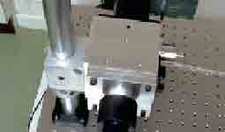
Sponsor: DSTL Value: £101,430 Duration: 1998-00
Several workers have reported the development of systems which allow the measurement of intrinsic fluorescence from particles irradiated with ultra-violet radiation. The fluorescence data are frequently recorded in conjunction with other parameters such as particle size, measured either as a function of optical scatter or as an aerodynamic size. The motivation for this work has been principally the detection of bioaerosols within an ambient environment. The scattering profile of a particle, ie: the spatial distribution of light scattered by the particle carried in a sample air-stream, can provide an effective means of particle characterisation and classification in terms of both size and shape parameters. Current work is aimed at the simultaneous recording of both spatial scattering and fluorescence data from individual particles with a view to substantially enhanced discrimination of biological aerosols. A prototype instrument has been constructed which presently employs continuous-wave 266nm laser radiation to produce both spatial scattering and fluorescence signals. The instrument incorporates a custom designed high-gain multi-pixel hybrid photodiode (HPD) to record the spatial scattering data and a single photomultiplier to record total fluorescence from the illuminated particle. Recorded data is processed by a variety of means to allow the classification of airborne particles on the basis of size, shape, and fluorescence.
Instrument for Simultaneous Determination of Particle Aerodynamic Size and Shape
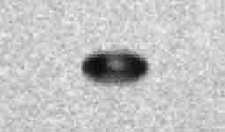
Sponsor: TSI Inc., EPSRC Value: £126,100 Duration: 1997-00
We are carrying out an investigation into the nature of droplet deformation in aerodynamic particle sizers, and in particular, in the TSI APS3320 Aerodynamic Sizer. It is known that droplets (between 1 and 20m m diameter in this case) deform to approximate oblate spheroidal shape in the accelerating airflow in the instrument nozzle and as a consequence they experience greater drag. This greater drag produces a higher particle velocity (~100m/s) than would be experienced by a solid sphere of equivalent diameter, and therefore the instrument (which is based on a time-of-flight measurement), will undersize the droplets by up to ~25%. One of the objectives of the work is to provide a means of measuring the degree of droplet deformation on-line for each droplet, and using this information to correct for the error in aerodynamic size. Beyond this, an investigation of errors induced in aerodynamic size measurements of solid non-spherical particles will be initiated with a view to again providing on line correction for aerodynamic size measurements as well as graphical representations of particle aerodynamic size and particle shape spectra.
SID - An Aircraft Mounted Instrument for Real-time Classification of Particle Shape within Clouds and Aerosols
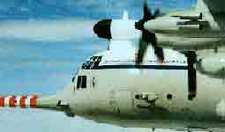
Sponsors: NERC, UK Met Office Value: £136,000 Duration: 1996-98
This IFMA project has focused on the development of a new aircraft mounted instrument, the Small Ice Detector (SID), to solve the problem of discriminating ice crystals from water droplets by measuring in-situ the sizes and shapes of these particles - droplets being spherical and ice crystals being one of many usually non-spherical forms. SID is carried in a wing pod on the Met. Research Flight's Hercules C-130 aircraft with communication to an inboard processor for data display and logging. As the aircraft flies through cloud, SID classifies all the particles passing through a specially designed laser scattering cell. In simple terms, the particles remain stationary within the air as the instrument passes by and in this way are essentially unaffected by the measurement process. SID is designed to achieve particle classification at throughput rates of up to 10,000 particles per second over a particle size range from ~1um to 70um diameter. Data are processed in real-time to ascribe size and shape factors to each particle. Ten times every second the instrument sends a batch of data to the inboard processor which both logs the data (with appropriate time-stamps) and provides the flight scientist with a simplified, continuously updated, real-time history plot of spherical and non-spherical particle concentration variations over the preceding 5 minutes of flight time. In this way the scientist is able to see at a glance the nature of the cloud through which the aircraft is flying. The logged data may be analysed in detail after the flight to allow three dimensional maps to be produced showing the ice crystal and water droplet concentrations and size distributions within the clouds.
Development of the commercial Aerosol Shape Analyser instrument Aspect
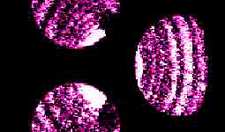
Sponsors: TCD (KTP) , BIRAL Ltd. Value: £160,240 Duration: 1996-98
This TCS (KTP) Programme with BIRAL (Bristol Industrial and Research Associates Ltd, Portishead, Bristol) led to the development of the BIRAL Aerosol Shape Analyser instrument, Aspect. The instrument measures the asymmetry in azimuthal light scattered by individual particles in a sample airflow at rates of up to 10,000 particles per second. This information, together with an assessment of particle optical size, is processed and presented in a variety of graphical displays and history plots showing the particle shape and size spectra of the aerosol under test. Aspect operates over a particle size range of 1 to 20 micrometres, and is designed for applications in areas of fundamental aerosol research, fine powder quality control, pharmaceutical aerosols, etc. For more information relating to instrument performance and pricing, please contact BIRAL.
Particle classification by multi-angle light scattering
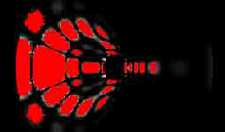
Sponsor: DSTL Value: £152,477 Duration: 1996-98
This project was part of an on-going series of developments with DERA to exploit some of the advances made by the PI Group in the field of particle analysis by spatial light scattering. The work led to the development of a prototype multiangle light scattering system which allowed individual airborne particles to be interrogated and classified.
Real-time identification of airborne asbestos fibres
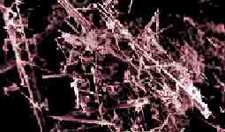
Sponsors: EPSRC (Ropa); Leverhulme Trust Collaborators: MRC Toxicology Labs. Leicester Value: £93,707 Duration: 1995-98
Airborne asbestos fibre is known to present a serious health risk by inhalation, causing a range of diseases from asbestosis (a fibrosis of the lung) to mesothelioma (an incurable cancer of the lining of the lung). However, though several commercial fibre monitoring instruments have been marketed no unambiguous real-time asbestos detection methods exist. This research was aimed therefore at providing, for the first time, an effective in-situ method for definitive identification of airborne asbestos fibres. We had previously developed an optical technique capable of discriminating asbestos-like fibres form other airborne particles on the basis of their spatial light scattering signatures (EPSRC grant GR/F72642). Magnetic alignment discrimination, was pursued as a means of additionally differentiating asbestos from other less-harmful non-asbestos fibres. Asbestiform minerals are known to posses unique magnetic properties although these had never previously been exploited in a real-time monitoring context. We developed a new test rig which combined spatial scattering analysis and magnetic realignment of asbestos fibres. The principle of operation involved the use of aerodynamic focusing of the sample flow to induce alignment of all fibrous particles (asbestos or not), and then the reorientation of only the asbestos fibres using a magnetic field. The spatial scattering detector technology subsequently allowed fibre alignment angle to be measured, thus providing a means of discriminating asbestos from non-asbestos fibres. The technique has been shown to be an extremely promising unambiguous method of asbestos identification, thus fulfilling the overall project objective of a real-time detection technique. Because the technique operates on single particles it is capable potentially of sensing the extremely low asbestos fibre concentrations required by law during clearance operations. International patents have been filed and arrangements for further development and commercial exploitation are in hand.
Development of data analysis systems for particle monitoring instruments
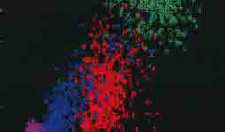
Sponsor: DSTL Value: £40,500 Duration: 1994-96
This project was concerned with the development of data analysis methods for particle light scattering instruments. The methods were largely based on artificial neural networks and related techniques.
High-resolution spatial light scattering analysis for airborne particle characterisation
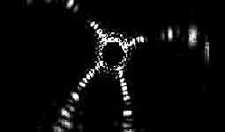
Sponsors: EPSRC; DSTL Value: £212,000 Duration: 1993-96
This project was concerned with a fundamental investigation into the potential of spatial light scattering as a means of particle characterisation / identification. The project underpinned many of the instrumentation developments which the PI Group undertook over the following years. The Group had developed under previous DSTL support unique light scattering instrumentation for the analysis of airborne particulates.
Development of precision microparticles (Si and SiO2) for aerosol studies.
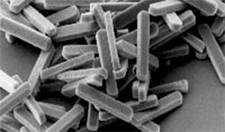
Sponsors: EPSRC; AEA Technology Value: £46,000 Duration: 1993-96
The study of microparticles, typically in the sub-micron and micron size ranges, is critically important in a wide range of scientific disciplines including air and water-borne pollution monitoring, powder technology for process control and reaction studies in pharmaceutical, chemical, ceramics, and combustion technology industries, and in contamination detection in clean environments such as hospital theatres and semiconductor fabrication facilities. Standard particles of accurately known dimensions and structure are frequently required for verifying theoretical models and for calibration in a wide range of analytic and monitoring instruments, particularly those involving light-scattering. Standard spherical particles are commercially available. Non-spherical particles of uniform shape and sub-twenty-micron size have proved to be remarkably elusive. This programme resulted in the production of precise non-spherical particles (eg; fibres, discs, cuboids, etc.) by utilising the inherent accuracy and reproducibility of silicon micromachining. These standard non-spherical particles will find application in a wide variety of research fields as well as in optical instrument calibration, and have been adopted as Calibration Reference Materials (CRMs) under the DTI's VAM (Valid Analytical Measurement) Initiative and are available for purchase.